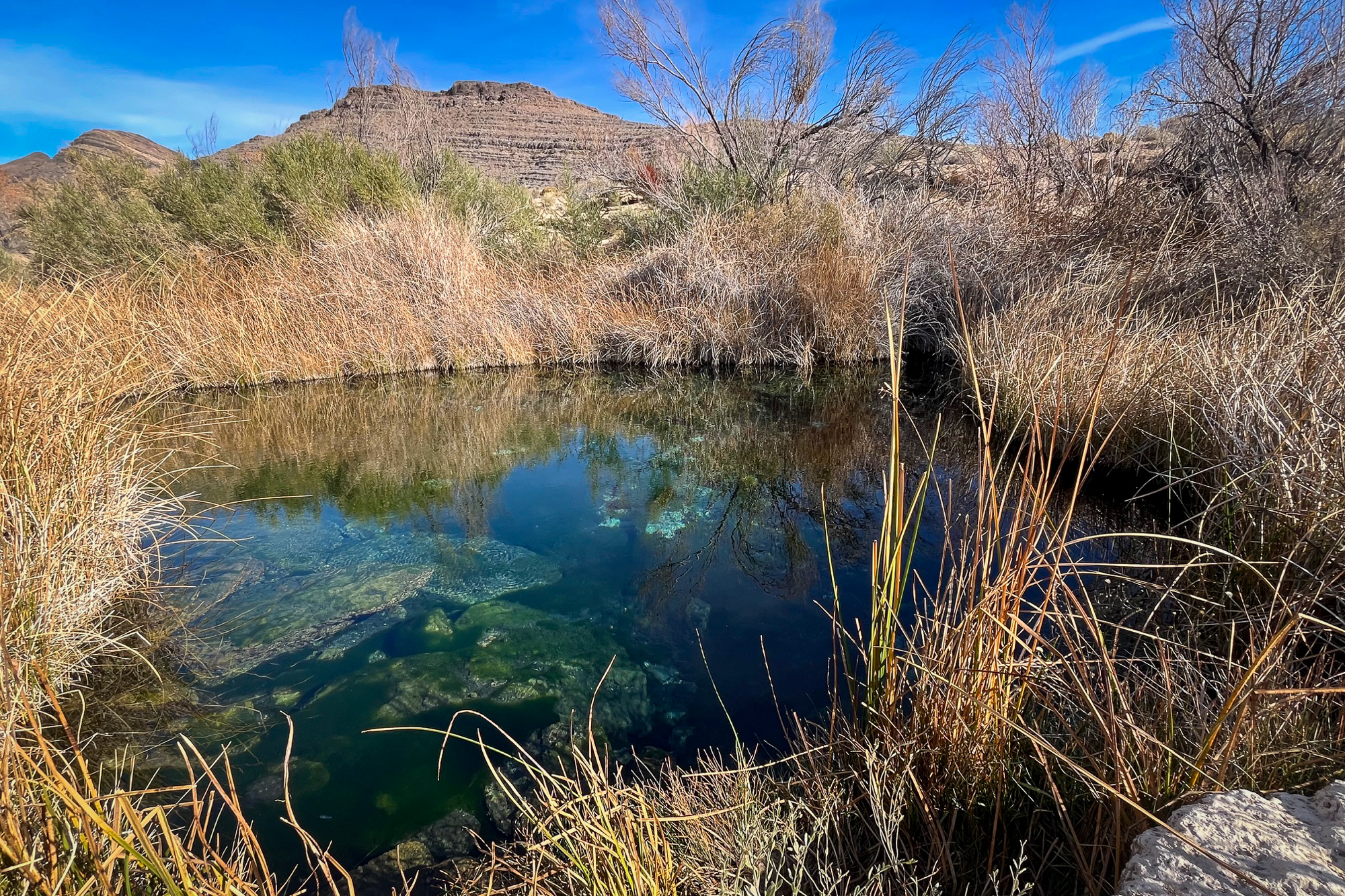OPINION: Fairbanks Spring: A family history under threat

As someone who has built a life along the Amargosa River and a descendant of one of the Mojave Desert’s most fascinating pioneers, I’m proud and lucky to be able to visit places that have helped shape my family history. Now, that history is under attack due to shortsighted and potentially devastating proposed mining projects upstream.
When Ralph Fairbanks — who was called “Dad” by those who met him — arrived in Las Vegas in 1903, he was a teamster. After his job helping to build the railroad grade with his mules and scrapers ended, he bought a little land and set up a livery stable to begin freighting from the humble little railroad siding to the boomtowns farther north: Tonopah, Goldfield and Rhyolite. He shrewdly realized that Las Vegas was never going to amount to anything (forgive the tongue in cheek) and set out for the mining fields that were more of a hotbed for the kind of action and opportunity he craved.
He sold out in Vegas and headed north, eventually ending up at the spring in what is now Ash Meadows National Wildlife Refuge in Nevada that bears his name: Fairbanks Spring. He had a wife and eight children in tow, and he did anything possible to make a living. He carried people and freight from the Las Vegas and Tonopah Railroad to the boomtown of Greenwater, always stopping by Fairbanks Spring to rent them a tent for the night, sell them supplies and engage in a friendly game of poker.
He then moved his operation to Greenwater, and when it went bust, he started the town of Shoshone, a water stop on the new Tonopah and Tidewater Railroad. In 1927, in his 70s, he moved 50 miles south and started the town of Baker, acquiring 160 acres where the first paved road across the Mojave Desert would intersect with the railroad. He flourished, and to this day, his descendants still populate many corners of the Mojave Desert. He was a rough character but right for the times and the location, and he figured out how to make a living in one of the harshest environments on the planet.
Perhaps he was an obvious parallel to the unique species of flora and fauna at Ash Meadows that have also figured out how to flourish there, as have the native peoples for millennia. And now, we are being asked to potentially sacrifice this wonderful little bit of American history for … phone batteries? Electric cars?
A junior mining industry player from Canada, Rover Critical Minerals, has proposed a project to drill multiple boreholes far too close to Fairbanks Spring for virtually everyone’s comfort but theirs. If this project is allowed to proceed, the spring and all the organisms that depend upon it are under a real threat.
Of course, the mining company claims to only be interested in sampling these lands for mineral potential. However, if Rover Critical Minerals is then able to successfully develop and sell a commercial lithium mining claim there, I believe the entire Ash Meadows ecosystem will be in real peril. That the federal agencies whose stated mission is the recovery of endangered and endemic species would even consider permitting a project that presents such a risk is absurd on its face. But, that’s the possible future we are facing in this rarest of places: desert wetlands that support 26 species of fish, plants, amphibians and other wildlife that only live there.
It is often said that history is important because we can’t know where we are going unless we know where we have been. Fairbanks Spring is important to me, as I have a familial connection to it. I hope that my son, Travis Fairbanks Brown, and his children, and theirs, will also be able to stand by those aqua-blue waters and imagine their ancestors standing there more than a century ago. It is up to all of us who care about history and the astonishing beauty and vitality of the natural world to fight this good fight. This one is a must-win.
I call upon those in power who have been charged with the caretaking of these lands to take urgent actions to protect Ash Meadows from these harms, not just for the sake of my family, but for all the families of life that deserve a chance to love this desert wetland as I do. This is a chance for our leaders to become a part of the story of Ash Meadows and Fairbanks Spring, to take their place alongside generations of humans who have enjoyed its gifts and passed them onward to their kin. I sure hope they take it before the chance is gone for good.
Brian Brown is a fourth generation Mojave Desert resident and the owner-operator of China Ranch, a date farm within the Amargosa region. He has been active in the efforts to preserve the unique ecological values of the Amargosa region for the last few decades.
The Nevada Independent welcomes informed, cogent rebuttals to opinion pieces such as this. Send them to [email protected].
